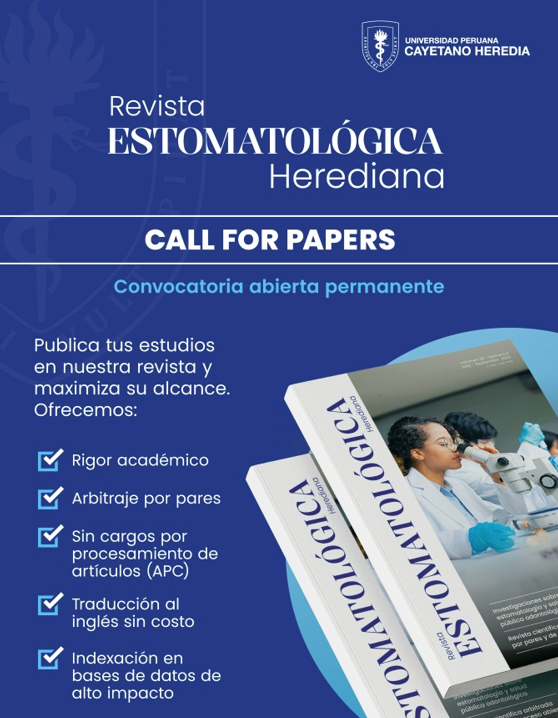Evaluación tomográfica del cóndilo y fosa mandibular en el tratamiento de las maloclusiones Clase II y Clase III. Revisión de Literatura.
DOI:
https://doi.org/10.20453/reh.v31i2.3972Resumo
El tratamiento de varias maloclusiones esqueléticas en pacientes niños y jóvenes son realizadas aplicándose fuerzas ortopédicas, buscando alterar el crecimiento o abrir suturas en determinadas regiones anatómicas. El cóndilo (CO) y la fosa mandibular (FM) son regiones que han sido sometidas a fuerzas intensas esperando su remodelación ósea como parte del tratamiento. Debido a los clásicos registros bidimensionales utilizados para evaluar las alteraciones morfológicas anatómicas, muchos resultados han sido controversiales. Con el uso de las tomografías y las modernas técnicas de superposiciones tomográficas, es posible identificar dichos cambios morfológicos de manera cuantitativa y cualitativa en las estructuras óseas. Se realizó una revisión de literatura integrada de las alteraciones morfológicas del CO y la FM evaluados por medio de la tomografía computarizada (TC) y la tomografía computarizada de haz cónico (TCHC) en pacientes con maloclusiones esqueléticas Clase II y Clase III que usaron aparatos con fuerzas ortopédicas. El objetivo fue identificar en la literatura los cambios morfológicos que ocurrieron en el CO y la FM después de aplicar los más aceptados protocolos de tratamientos de las respectivas maloclusiones. De esta manera nos permitirá eliminar factores intervinientes como distorsiones, superposiciones no deseadas de estructuras anatómicas y diversos errores de medición que tienen como característica los clásicos registros bidimensionales y que alteran la correcta información.
Downloads
Downloads
Publicado
Como Citar
Edição
Seção
Licença
Os autores mantêm os direitos autorais e cedem à revista o direito de primeira publicação, sendo o trabalho registrado com a Licença Creative Commons, que permite que terceiros utilizem o que é publicado desde que mencionem a autoria do trabalho, e ao primeiro publicação nesta revista.























